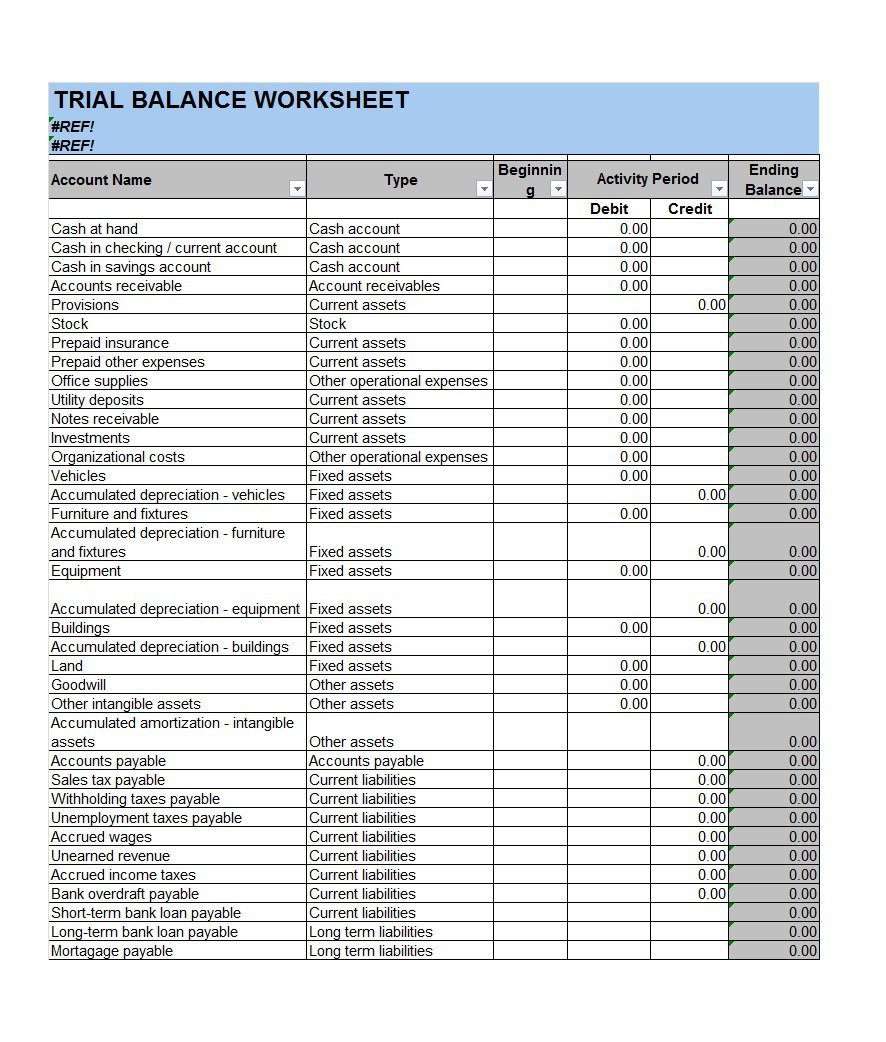Balance Sheet: Explanation, Components, and Examples

Current asset accounts include cash, accounts receivable, inventory, and prepaid expenses, while long-term asset accounts include long-term investments, fixed assets, and intangible assets. In contrast, the income and cash flow statements reflect a company’s operations for its whole fiscal year—365 days. This practice is referred to as “averaging,” and involves taking the year-end (2023 and 2024) figures—let’s say managing s corporation at for total assets—and adding them together, then dividing the total by two. This exercise gives us a rough but useful approximation of a balance sheet amount for the whole year 2024, which is what the income statement number, such as net income, represents. How assets are supported, or financed, by a corresponding growth in payables, debt liabilities, and equity reveals a lot about a company’s financial health.
The Balance Sheet Equation

It shows in one place how much the business owns (assets) and owes (liabilities). The report is used by business owners, investors, creditors and shareholders. The current ratio is calculated by dividing the total current assets by the total current liabilities. Liabilities represent financial obligations a company must fulfil in the future, including loans and lease payments. These obligations are classified as either current liabilities, due within the forthcoming year, or long-term liabilities, due beyond a year.
What are Accounting Policies? Types, Examples & Significance of Accounting Policies
For information pertaining to the registration status of 11 Financial, please contact the state securities regulators for those states in which 11 Financial maintains a registration filing. Activity ratios mainly focus on current accounts to reveal how well the company manages its operating cycle. Financial strength ratios can include the working capital and debt-to-equity ratios. Financial ratio analysis is the main technique to analyze the information contained within a balance sheet.
EnKash and NPCI BharatBill Pay (NBBL) join forces to revolutionize B2B invoice payments with BBPS integration
Current liabilities are the obligations that are expected to be met within a period of one year by using current assets of the business or by the provision of goods or services. All liabilities that are not current liabilities are considered long-term liabilities. All assets that are not listed as current assets are grouped as non-current assets. A common characteristic of such assets is that they continue providing benefit for a long period of time – usually more than one year. Examples of such assets include long-term investments, equipment, plant and machinery, land and buildings, and intangible assets.
- The balance sheet is a crucial tool for investors and analysts to assess a company’s financial health and make informed investment decisions.
- The balance sheet only reports the financial position of a company at a specific point in time.
- Liabilities denote a company’s financial obligations or debts to external parties.
- Balance sheets are an inherently static type of financial statement, especially compared to other reports like the cash flow statement or income statement.
- It reflects past transactions and events, which is great for looking back, but it doesn’t capture the dynamic changes happening in real-time or provide insight into future prospects.
When a company loses money, the loss is subtracted from shareholders’ equity. When a company buys a fixed asset, it records the purchase on its balance sheet. The company then begins to depreciate ( or reduce in value) the asset over time.
Which of these is most important for your financial advisor to have?
It is easier to compare the information in a vertical format balance sheet. The Balance sheet presents an account of where a company has obtained its funds and where it has invested them. A business has primarily two sources of funds which are shareholders and lenders.
Regardless of the size of a company or industry in which it operates, there are many benefits of reading, analyzing, and understanding its balance sheet. She’s got more than twice as much owner’s equity than she does outside liabilities, meaning she’s able to easily pay off all her external debt. You can improve your current ratio by either increasing your assets or decreasing your liabilities. Ecord the account name on the left side of the balance sheet and the cash value on the right. Let’s look at each of the balance sheet accounts and how they are reported.
For instance, if a company takes out a ten-year, $8,000 loan from a bank, the assets of the company will increase by $8,000. Its liabilities will also increase by $8,000, balancing the two sides of the accounting equation. It is also possible to grasp the information found in a balance sheet to calculate important company metrics, such as profitability, liquidity, and debt-to-equity ratio. An accounting method wherein revenues are recognized when cash is received and expenses are recognized when paid. The cash basis of accounting is usually followed by individuals and small companies, but is not in compliance with accounting’s matching principle.